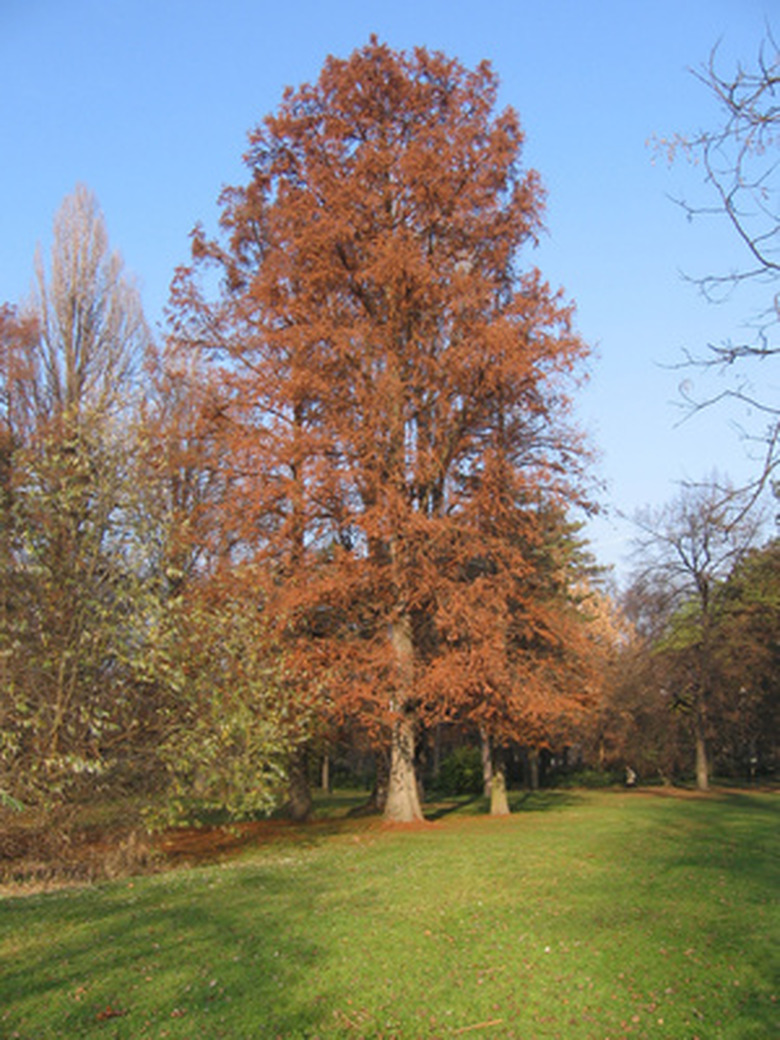Bald Cypress Planting Ideas
Upright with a rounded, spire-like canopy of feathery leaves and lots of twigs, the bald cypress (Taxodium distichum) makes a stately and hardy tree choice across USDA Hardiness Zones 5 though 10. Tolerant of heavy, compacted, soggy soils and droughts as well as floods, this tree species grows well in urban developed areas. It grows 50 to 70 or 100 feet tall with width of about 25 feet.
Upland Gardens
Edward Gilman and Dennis Watson, both of the University of Florida, comment in their publication with the U.S. Forest Service that bald cypresses grow beautifully and healthfully in dry, upland gardens away from water. This allows their use in lawns as a focal tree or seasonal shade tree, especially in long, narrow plots. The roots in drier soils do not tend to cause any uplifting of nearby sidewalks or asphalt roadways.
Water's Edge
American plantsman Dr. Michael Dirr of the University of Georgia notes that bald cypresses are ideal for use near water where few other trees prosper, making a grand visual statement in groves or groupings. Not only do the tree roots enjoy the ample moisture, the stately habit of the tree vividly marks the smooth lake or pond edge, and gets reflected in the water on windless days. The attractive knobby "knee" roots develop at the water's edge, too.
- Upright with a rounded, spire-like canopy of feathery leaves and lots of twigs, the bald cypress (Taxodium distichum) makes a stately and hardy tree choice across USDA Hardiness Zones 5 though 10.
- American plantsman Dr. Michael Dirr of the University of Georgia notes that bald cypresses are ideal for use near water where few other trees prosper, making a grand visual statement in groves or groupings.
Street Tree
Roadside ditches, large parking lot islands, or medians on boulevards, parkways or freeways make grand locations for linear, formal rows of bald cypress trees, or informal clustered groupings. These trees tolerate urban pollution, compacted soils, droughts and waterlogged soils. An excellent example of this design grows on the John Young Parkway in southern Orlando, Florida, just north of Interstate 4.
Hedgerow
Planting bald cypress trees in a linear fashion, more closely spacing the trees at a distance of 15 to 20 feet center-to-center, creates an impressively tall hedgerow. Although the spacing seems sparse for a hedge when the trees remain young and small, within two decades, their branches likely touch each other. The inter-tree gaps close and the trees grow skyward, creating a very tall, narrow hedge line for blocking wind or marking a property line.
References
- "Dirr's Hardy Trees and Shrubs;" Michael A. Dirr; 1997
